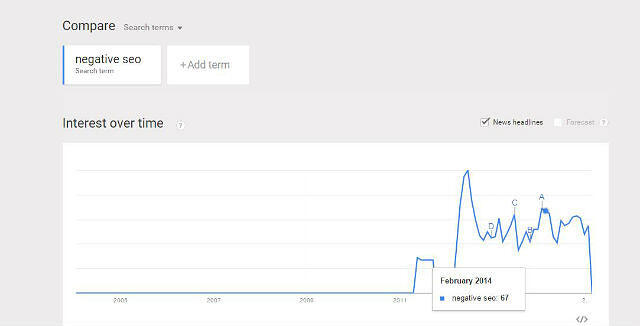Updated January 13, 2023
Reading Time: 3 minutes
Evil-Doing on the Web
There’s a growing SEO trend that few online marketers are talking about. We’ve experienced it firsthand. Due to the damage
Link-Related Background
Inbound links are a powerful signal for SEO. Links can help or hurt your website, though. If a relevant, quality website points to your content, it’s like a vote of confidence. You’re getting a compliment. You’re also getting some SEO love.
On the other hand, if you get a link from a spammy source — link farms or site that is completely unrelated to what your business does — then it can hurt your SEO profile. Amass enough of those poor quality links and your website is in jeopardy from filters like Google’s Penguin algorithm. If you have too many bad links you run the risk of Google thinking that you’re trying to beat
Link Building 101
Links and content go hand-in-hand from an SEO standpoint. Links without content to back it up is suspicious to search engines like Google and Bing. We recommend that our clients begin their link building efforts with a coordinated content marketing strategy. By publishing great content regularly, you are sending positive SEO signals and it seems more logical to search engines that you would be generating links. Sites with no content, using the same logic, shouldn’t be getting lots of new links. Why would they? There’s nothing new to link to…
Black Hat Link Building Trend
We’re seeing that less-than-scrupulous Webmasters (or business owners) are using black hat link building techniques to attack their competition. How can they do this?! Unfortunately, it can be accomplished in a couple of ways. For instance, you can hire uninformed link builders for as little as $5 per job (on sites like Fiverr) to build links. A more sophisticated way is infinitely more devious, and it requires technical hacking skills. We’ve seen:
- An injection of malware to hijack a website (which isn’t really negative SEO, just plain old-fashion hacking).
- Add redirects to send unqualified traffic (e.g., from a porn site). This creates a “dirty” or unnatural link profile.
- Add links to poor quality websites (e.g., link farms) or ones unrelated to your business or industry.
Moz had an interesting article on negative SEO last year. Given that we’ve seen these tactics used against our clients and our own website, we suspect this trend will continue in 2015. Look at this Google trend on this search term:

Your Best Defense
We enjoy freedom on the Web. Unfortunately the price of that freedom is having to combat black hat link building against your website and brand. So what’s the best defense? Vigilance.
Here are three things you can do now to protect your business:
- Analyze your website traffic looking for spikes or dips that can’t be explained. This forensic research requires knowledge of Google Analytics and Google Webmaster Tools. You’re looking for positive (excellent links from great referring sites) and negative signals (search filters like Penguin).
- Review referral sources to see what websites are sending visitors your way and determine if they are qualified or not.
- Check links on a regular basis. We recommend investing in a professional-grade link analysis, at the very least. If you have issues, spend the time or dollars to clean them up and continue monitoring them (at least monthly).
Sadly, negative SEO is alive and well. Beware and be vigilant.
Are you seeing any signs of black hat link building on your website?

 Pigeon Update Passport Needed
Pigeon Update Passport Needed